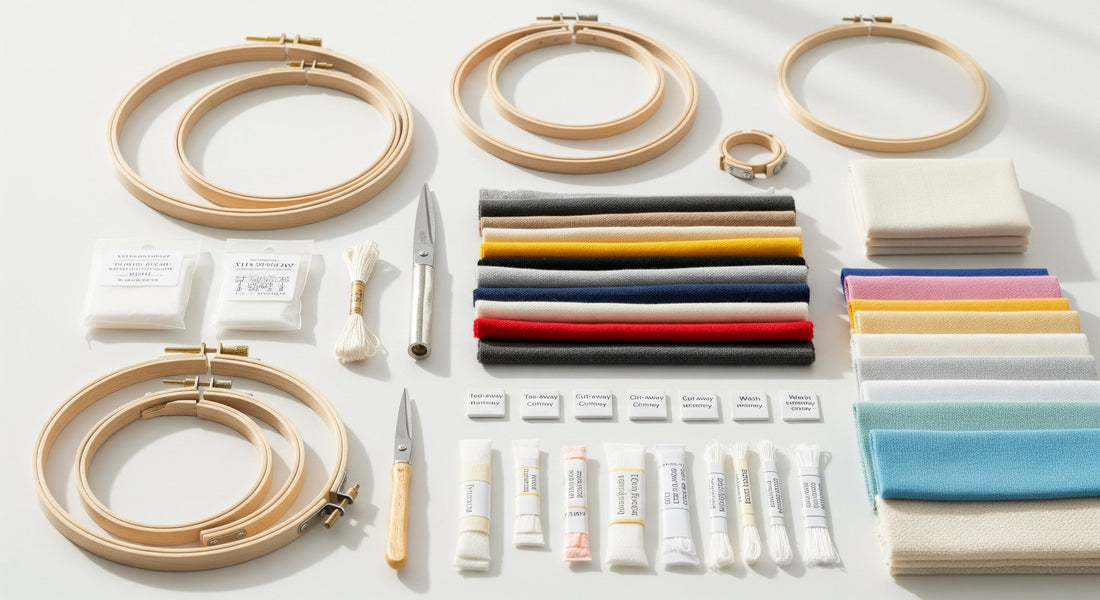
Hooping Techniques & Stabilizers
Share
How to Properly Secure Fabric and Use Stabilizers for Professional Results
One of the most important (and most overlooked) aspects of embroidery is how you prepare your fabric before stitching. Whether you’re hand embroidering or using a machine, proper hooping and the right stabilizer make all the difference in quality, tension, and design longevity.

1. What is Hooping?
Hooping refers to placing your fabric between two ringed frames (a hoop) to keep it taut and prevent shifting while stitching.
Why it matters:
· Keeps stitches even and in place
· Prevents puckering and misalignment
· Makes stitching easier and more controlled
Types of hoops:
· Wooden hoops – lightweight, ideal for hand embroidery
· Plastic hoops – grip better, good for both hand and light machine use
· Snap hoops / magnetic frames – great for machine embroidery on thicker or larger fabrics

2. Hooping Tips
· Always iron your fabric before hooping
· Place the fabric slightly taut (not overstretched)
· Align fabric grain with the hoop for better results
· Tighten the outer hoop screw for a firm hold
· Avoid hooping stabilizer separately—it should be hooped with the fabric unless floated
3. What is a Stabilizer?
Stabilizers are materials placed behind or within the fabric to provide structure during stitching. They prevent puckering, stretching, or tearing—especially with machine embroidery.
4. Types of Stabilizers
Tear-Away
· Easy to remove by gently tearing
· Best for stable woven fabrics (cotton, twill)
Cut-Away
· Trimmed close after stitching but remains permanently
· Ideal for stretch fabrics and garments
Wash-Away
· Dissolves in water, perfect for lace or sheer designs
· Used when no stabilizer should remain visible
Heat-Away (less common)
· Disintegrates under heat
· Great for delicate or heat-tolerant fabrics
Fusible (iron-on)
· Bonds to fabric with heat for added stability

5. Floating vs. Hooping
In machine embroidery, sometimes it’s better to float your fabric:
· Hooping: Fabric and stabilizer are secured inside the hoop
· Floating: Stabilizer is hooped, and fabric is secured with temporary adhesive or pins on top
Floating is useful when:
· The fabric is too thick or stiff to hoop
· You want to avoid hoop burn (marks)
· You’re working with delicate garments
6. Common Mistakes to Avoid
· Overstretching fabric in the hoop
· Using the wrong stabilizer for the fabric type
· Not removing or trimming stabilizer properly
· Skipping stabilizer altogether!
Final Thoughts
Think of stabilizers and hooping as the foundation of your embroidery project. Skipping them—or doing them incorrectly—can lead to distorted stitches, fabric damage, and wasted time. With the right tools and methods, your work will look more polished and last much longer.